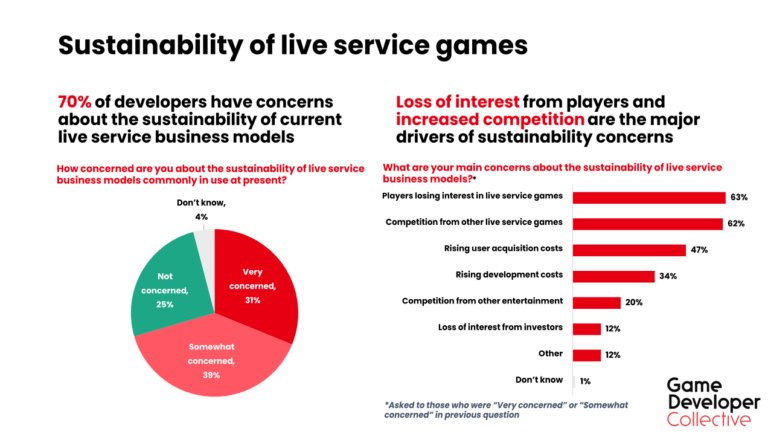Thick Thighs Save Lives
NeoGAF's Physical Games Advocate Extraordinaire
As part of a new survey carried out by Game Developer, 600 developers were interviewed between February and March and asked a number of questions about business models and monetisation in video games.
Participants were asked how concerned they were about the sustainability of live service business models commonly being used today.
Of those asked, 39% said they were “somewhat concerned”, while a further 31% said they were “very concerned”. A quarter said they weren’t concerned, while the remaining 4% didn’t know.
Live service games are generally defined as those which continue to provide regular content after a game has been released – such as regular seasons with Battle Passes, for example – in an attempt to keep the player engaged and, ultimately, encourage continued spending on the game through microtransactions or subscriptions.
Of those surveyed who said they were either somewhat or very concerned about the model’s sustainability, around two thirds said they were worried about players losing interest in live service games, or that competition from other live service games would affect theirs.
Rising user acquisition costs and development costs were also cited as concerns.

Last month Warner Bros Discovery reiterated its plans to increase focus on live service and free-to-play games.
Speaking at a Morgan Stanley conference, the company’s CEO of global streaming and games JB Perrette said its four main IP – Mortal Kombat, Game of Thrones, DC and Harry Potter – will be involved in these plans.
“The opportunity is to take those four franchises and be able to develop a much more holistic approach, particularly around expanding into the mobile and multiplatform free-to-play space, which could give us a much better and consistent set of revenue,” he said. “And you’ll see us launching later this year some mobile free to play games, which we hope will start building that.”
“And then secondarily live services, so rather than just launching a kind of one and done console game, how do we develop a game around, for example, Hogwarts Legacy or Harry Potter, that is a live service where people can come today and live and work and build and play in that world on an ongoing basis?”
A developer who worked on Knockout City also said last month that developers should consider releasing modified ‘private server’ versions of their live service games when they eventually shut down, in order to preserve them and make them playable in the future.

70% of developers worry about the live service model’s sustainability, survey shows | VGC
Nearly a third are “very concerned” about the future of the trend…











